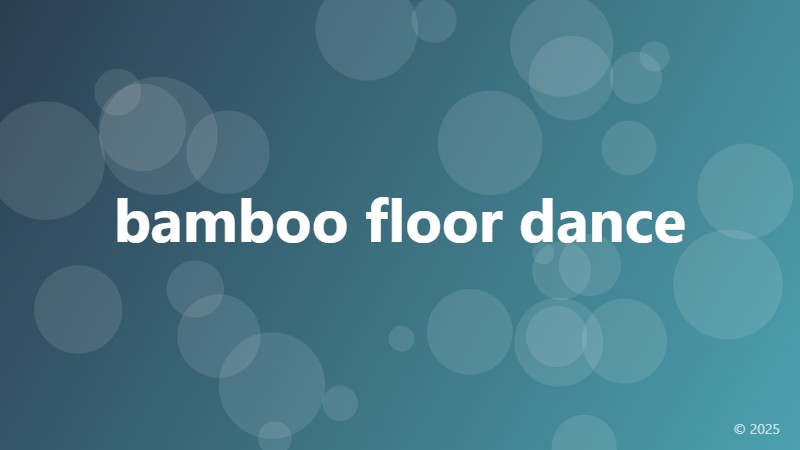bamboo floor dance

The Unique Charm of Bamboo Floor Dance
Bamboo floor dance is a traditional dance form that originated in Southeast Asia, particularly in Indonesia and the Philippines. This unique dance style is characterized by the use of bamboo poles or sticks as props, which are manipulated by the dancers to create a rhythmic and visually appealing performance.
A Blend of Culture and Movement
Bamboo floor dance is deeply rooted in the cultural heritage of the regions where it is practiced. The dance is often performed during traditional festivals and celebrations, such as weddings and harvest festivals. The dance movements are often inspired by the daily activities of the people, such as farming, fishing, and other traditional occupations.
The bamboo poles used in the dance are typically made from sustainable bamboo sources, which are abundant in the regions where the dance is performed. The poles are carefully crafted to produce a distinct sound when struck against the floor or against each other, creating a unique percussive element to the dance.
The Rhythmic Patterns of Bamboo Floor Dance
The rhythmic patterns of bamboo floor dance are complex and varied, with different regions having their own distinct styles and rhythms. The dance is often performed in a group, with each dancer playing a specific role in creating the overall rhythm and pattern of the dance.
The rhythmic patterns are often inspired by the natural environment, such as the sounds of the wind, water, and animals. The dancers use their feet, hands, and bamboo poles to create a dynamic and engaging performance that is both visually and aurally appealing.
The Benefits of Bamboo Floor Dance
Bamboo floor dance is not only a unique and captivating form of cultural expression, but it also has several benefits for the dancers and the audience. The dance requires strength, flexibility, and coordination, making it an excellent form of exercise and physical activity.
The dance also promotes social bonding and community building, as it is often performed in a group setting. The dance brings people together, fostering a sense of community and shared cultural identity.
In addition, bamboo floor dance is a sustainable and eco-friendly form of art, as it utilizes natural and renewable resources. The dance promotes environmental awareness and appreciation, as it highlights the importance of preserving traditional cultural practices and natural resources.
Overall, bamboo floor dance is a unique and captivating form of cultural expression that combines traditional movements, rhythms, and props to create a visually and aurally appealing performance. Its benefits extend beyond the dance itself, promoting physical activity, social bonding, and environmental awareness.